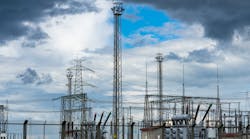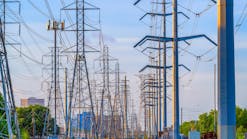COVID-19 has been a seismic event in many areas of society and power distribution grids are no exception. At the time of writing this article, it is late summer. Here in Europe, most countries have seen the worst of the virus and gotten it under control, but it’s still here and no one can rule out a second wave.
With that in mind, what are the lessons that the pandemic has taught us so far for running distribution grids during lockdowns, in the short-term aftermath, and for the long-term future?
Pandemic priorities
Thinking back to the height of the virus, societies were eerily quiet in terms of economic activity. Factories were dormant, shops shuttered, and offices empty, as people stayed home (many still are) to stop the spread of the virus. As one would expect, this had implications for distribution system operators (DSOs) needing to find a new balance of electricity, production, and consumption — but the most serious threats weren’t necessarily the most obvious ones.
Yes, loads on the grid changed, forcing DSOs to adapt. They were quite easily able to, though. The challenge was new areas of increased demand such as temporary hospitals and other critical locations. Grids weren’t planned with these in mind and DSOs had to keep supply constant and at high quality. However, they often had to rely on old analogue assets that generated no performance data. Ensuring they were up to scratch meant manual inspection.
This brings us to the bigger but less obvious challenge — people. For a long time, the utility sector has depended on the accumulated knowledge and experience of an aging workforce. However, the virus required DSOs to minimize the number of employees in control centers and engineers in the field — especially given the increased risk for older workers. There is not a lot of spare capacity in the typical DSO workforce and perhaps the biggest threat to grid stability was that too many key personnel were removed from the workforce during lockdown. As such, the inability to monitor and control assets remotely emerged as a major pandemic risk.
Reopening and reemerging
The second key period for DSOs is the one we are in now. The worst of the first wave is behind us. Hopefully there is no second wave, but if there is, it will likely appear as winter draws in. So, DSOs have a potentially narrow window of time in which to both recover and prepare for further turmoil, asking themselves some key questions:
- What went well and what could have gone better?
- What can we do/put in place to be better prepared for future crises?
- What new practices and processes have emerged that we should have been doing anyway?
The answers will vary for each DSO, but we can make one high level observation. Broadly, there are two ways to prepare for a potential second wave or another crisis. One is traditional grid reinforcement — based on observations from the pandemic, utilities can upgrade transformers, add new cables, and so forth. The problem is, this is a long and expensive approach to take, especially when time and money may be limited.
The second approach is a digital one. Greater real-time insights and control over grid performance enables DSOs to better respond to future difficulties and more intelligently plan investments. Compared to physical upgrades, digital investments can be transformative in a very short time and for a typically lower cost.
Looking ahead
Second wave or not, eventually the pandemic will pass. The challenge then will be to figure out what such a seismic event means for the future of distribution networks.
One possible effect is there will be less public funding available, with governments indebted because of their response to the pandemic. This may end the traditional ‘better safe than sorry’ approach of investing in expensive physical infrastructure upgrades when networks reach capacity.
In the future, tighter budgets may mean greater emphasis on sweating assets and only making large physical investments when absolutely necessary. To do that, DSOs need greater insight into grid performance at a granular level, which means digitalization and collection of real, hard data.
Though digitalization itself requires investment, it is in orders of magnitude less than physical infrastructure and can give DSOs confidence that they are getting the most out of every pound and euro.
Digitalization also enables more remote working, which not only protects people during the pandemic, but also saves money and satisfies what may turn out to be a widespread shift to more remote working across societies after the pandemic.
At the same time, COVID-19 could change how people think about energy entirely. Governments are pushing for smart solutions to ensure we repower up the economy based on sustainable energy solutions. We may see more microgrids and distributed resources as a response. DSOs will be called upon to invest to adapt and digitalization will give them the insight to derisk those investments and increase return.
The trend toward smart grids was already well underway, but the pandemic has underlined both the wisdom and urgency of that evolution. The enduring lesson of the pandemic for DSOs is that fast, smart, and efficient decisions depend on deep, broad, and accurate data.


